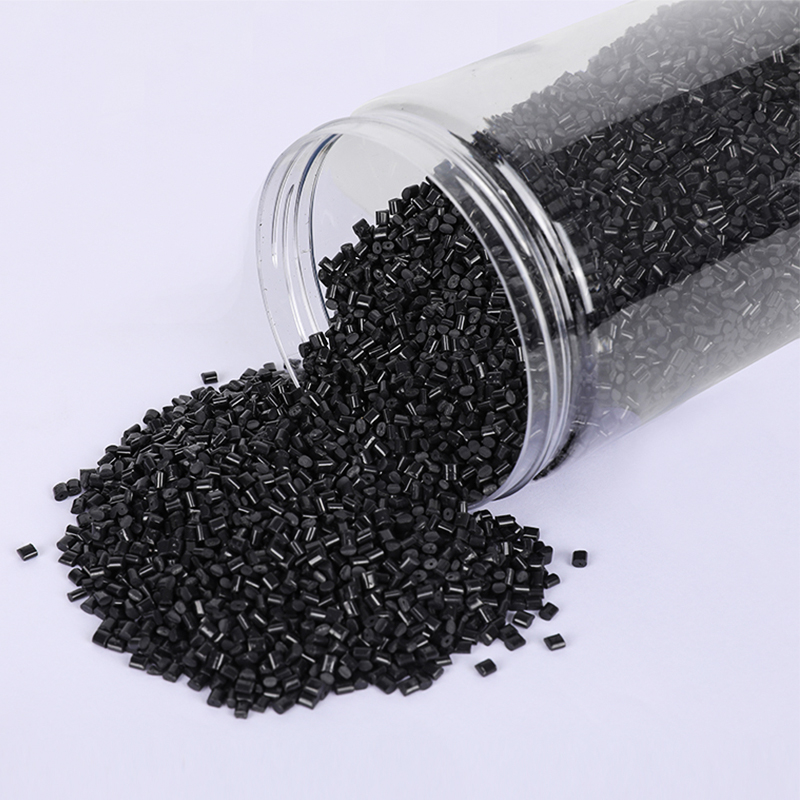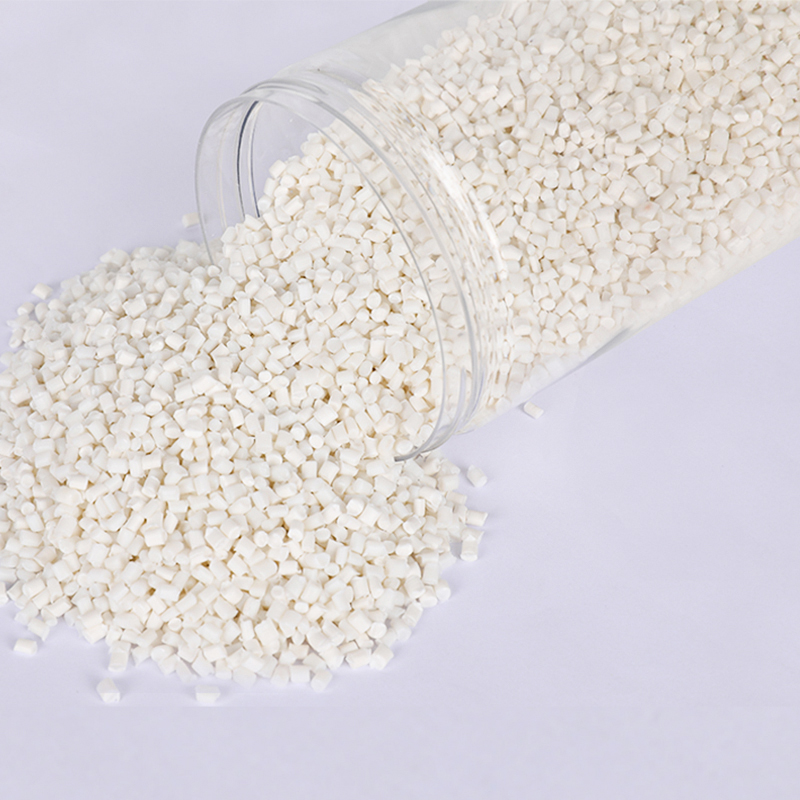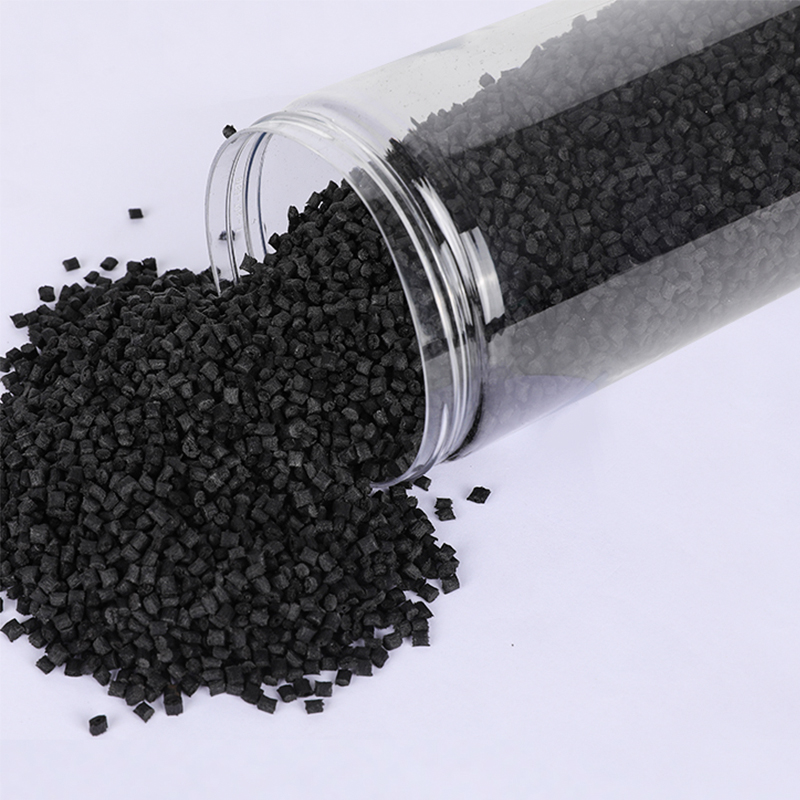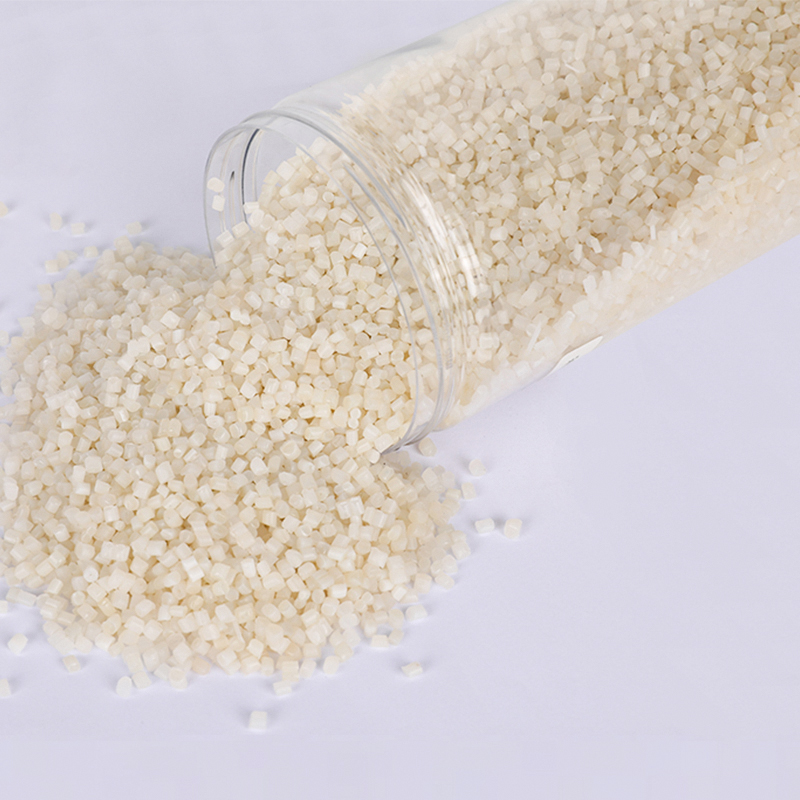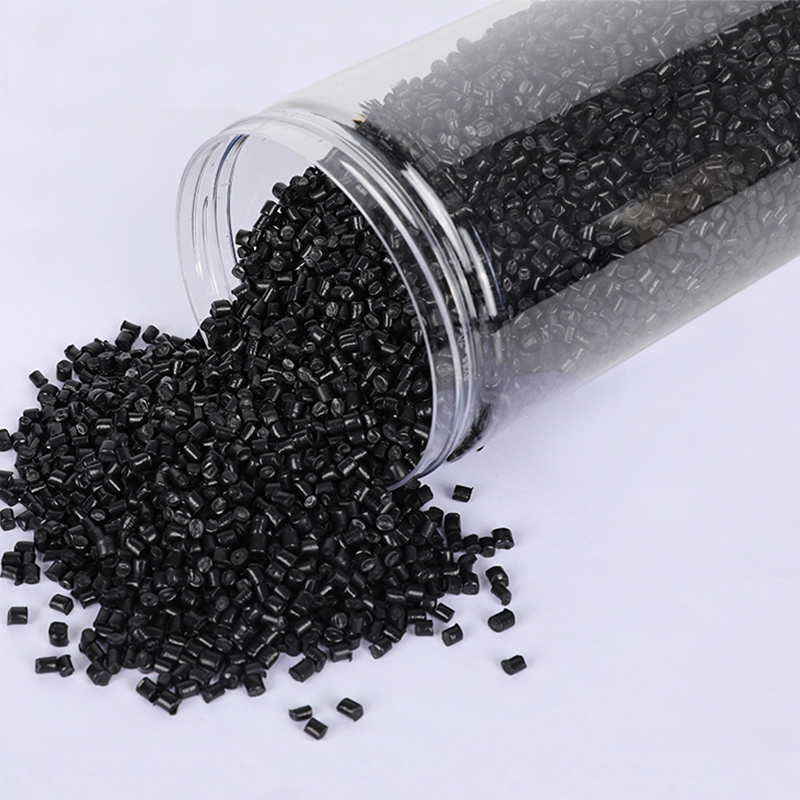Stay up to date with our recent products
Web Menu
Product Search
Exit Menu
Understanding the Safety and Applications of Recycled Polyethylene and Resin
What is Recycled Polyethylene Used For?
Recycled Polyethylene (RPE), also known as recycled resin polyethylene, is a sustainable material gaining significant attention in various industries. Derived from post-consumer or post-industrial waste, RPE offers a greener alternative to virgin polyethylene, which is one of the most commonly used plastics worldwide. The process of recycling polyethylene not only helps reduce waste but also conserves energy, making it an eco-friendly option for manufacturers and consumers alike.
In this article, we will explore the many uses of recycled polyethylene, its benefits, and how it is transforming industries by offering a more sustainable way to produce plastic products.
What is Recycled Polyethylene?
Recycled Polyethylene is polyethylene plastic that has been recovered from used plastic products, typically through mechanical or chemical processes. The plastic is cleaned, sorted, and processed to remove contaminants before being reformed into pellets, sheets, or other usable forms. These recycled forms can then be used to manufacture new plastic products, making the process a closed-loop system that reduces waste and conserves resources.
Polyethylene is one of the most versatile and widely used thermoplastic polymers. From plastic bags and bottles to pipes and films, polyethylene is used in numerous everyday products. With increasing concerns over plastic pollution, the shift towards using recycled polyethylene has become a game-changer in sustainability efforts.
What is Recycled Polyethylene Used For?
Plastic Bags and Films
Recycled polyethylene is widely used in the production of plastic bags and films. Grocery bags, retail bags, and various types of packaging films are often made from RPE. These products are lightweight, flexible, and durable, making them ideal for packaging. By using recycled polyethylene, companies can reduce their reliance on virgin plastic and promote a circular economy.
Containers and Bottles
Many containers, bottles, and packaging materials that were once made from virgin polyethylene are now being produced using recycled resin polyethylene. These containers, such as milk jugs, detergent bottles, and cosmetic packaging, benefit from the strength and durability of recycled polyethylene. The use of RPE in consumer goods packaging is increasing as more brands adopt eco-friendly practices.
Pipes and Fittings
Polyethylene pipes are commonly used in water supply systems, sewage systems, and irrigation networks. Recycled polyethylene is used to manufacture these pipes and fittings, which offer long-lasting and reliable performance. The use of recycled resin helps reduce the environmental impact of the plastic industry while maintaining the high quality and durability of the pipes.
Plastic Lumber and Outdoor Furniture
Recycled polyethylene is a key component in the production of plastic lumber used in decking, fences, and outdoor furniture. These products are highly resistant to weathering, decay, and pests, making them a long-lasting alternative to traditional wood. By utilizing recycled polyethylene, manufacturers can create environmentally friendly products that do not compromise on durability or appearance.
Automotive Parts
The automotive industry has also embraced the use of recycled polyethylene in manufacturing parts such as bumpers, interior components, and trim. RPE offers excellent impact resistance and durability, which are critical qualities in automotive applications. By using recycled materials, the automotive sector can reduce its environmental footprint and promote sustainability.
Textiles and Carpets
Recycled polyethylene can even be found in textiles, such as clothing, upholstery, and carpeting. The recycling of polyethylene for these purposes involves converting the material into fibers, which can then be woven into fabrics or carpets. This innovative use of recycled resin polyethylene helps reduce the demand for new synthetic fibers, contributing to a more sustainable textile industry.
Agricultural Films
Agricultural films made from recycled polyethylene are widely used in farming for crop protection, greenhouse coverings, and mulching. These films help regulate temperature and moisture levels in agricultural environments, promoting healthier crops. By using recycled polyethylene, farmers can reduce their environmental impact while still benefiting from the advantages of plastic films.
Industrial Packaging
Recycled polyethylene is also used in industrial packaging applications. Stretch films, shrink wraps, and heavy-duty bags made from recycled resin are ideal for protecting goods during transport and storage. These materials help secure products while minimizing the use of new plastic, promoting sustainability in the logistics and manufacturing sectors.
The Environmental Benefits of Recycled Polyethylene
Using recycled polyethylene offers numerous environmental benefits:
Reduction of Plastic Waste: Recycling polyethylene reduces the amount of plastic waste that ends up in landfills or the ocean. By reusing the material, we can minimize the harmful impact of plastic pollution on ecosystems.
Energy Conservation: The production of recycled polyethylene consumes significantly less energy than manufacturing plastic from raw petroleum. This energy savings translates into lower carbon emissions and a smaller environmental footprint.
Conservation of Natural Resources: Recycling polyethylene reduces the need for virgin plastic production, which is derived from non-renewable fossil fuels. By using recycled materials, we can conserve valuable natural resources for future generations.
Support for the Circular Economy: The use of recycled polyethylene supports the circular economy model, where materials are reused and recycled instead of being discarded. This model promotes sustainability, reduces waste, and creates a more efficient use of resources.
Challenges and Future Outlook
While the benefits of recycled polyethylene are clear, there are some challenges to be addressed. Contamination in the recycling process, inconsistent quality of recycled material, and limited infrastructure for recycling in some regions can hinder the widespread adoption of RPE. However, with advances in recycling technology and growing consumer demand for sustainable products, the future of recycled polyethylene looks promising.
As industries continue to invest in recycling infrastructure and adopt more sustainable practices, the use of recycled polyethylene is expected to expand. From packaging and automotive parts to textiles and agricultural products, recycled polyethylene is set to play an increasingly important role in creating a more sustainable and circular economy.
Is Recycled Polyethylene Food Safe? Let’s Unwrap the Truth
In today’s world, sustainability is more important than ever, and as consumers become increasingly eco-conscious, the question of whether recycled polyethylene is safe for food use has become a hot topic. Recycled resin polyethylene is often touted as a sustainable option in packaging, but how safe is it when it comes into direct contact with our food? In this article, we’ll unpack the issue by exploring the safety of recycled polyethylene for food, its regulatory guidelines, and the challenges faced in ensuring its safety.
What is Polyethylene, Anyway?
Polyethylene is one of the most common plastics used for packaging, and it’s found in everything from grocery bags to bottles and food containers. It’s made from petroleum-based resins, which makes it highly versatile, inexpensive, and durable. Polyethylene can be categorized into two main types: low-density polyethylene (LDPE) and high-density polyethylene (HDPE). Both types are popular choices in packaging, especially when it comes to food-related products.
Recycled polyethylene, as the name suggests, is polyethylene that has been processed and repurposed from post-consumer products—like plastic bottles or food containers. This process helps reduce waste, conserve resources, and lower the carbon footprint associated with plastic production. But when it comes to food safety, is this recycling process enough to ensure that the material remains safe for food packaging?
The Safety of Recycled Polyethylene for Food
Let’s address the million-dollar question: Is recycled polyethylene food-safe?
The short answer is it can be, but it depends on a few critical factors. Polyethylene in its virgin (unrecycled) form is generally considered safe for food use. It’s non-toxic, chemically inert, and doesn’t leach harmful substances into food. However, things get a little more complex when we start talking about recycled resin polyethylene.
The process of recycling plastic involves cleaning and reprocessing the material, which can lead to potential risks if not done properly. Contaminants from previous food packaging or environmental pollutants can pose a threat, so it’s crucial that recycled polyethylene is carefully processed to meet stringent safety standards. Recycled polyethylene that is used for food packaging typically goes through a series of tests to ensure it meets food-grade safety standards.
Key Regulations for Food-Grade Recycled Polyethylene
In many countries, regulatory bodies such as the U.S. Food and Drug Administration (FDA) and the European Food Safety Authority (EFSA) regulate the use of recycled plastics in food packaging. These agencies set stringent guidelines to ensure the safety of recycled materials in food contact.
FDA Guidelines: In the U.S., the FDA oversees recycled polyethylene used in food packaging. The agency requires that recycled materials must meet the same safety standards as virgin plastics. Recycled resin polyethylene used for food contact must undergo a process called food-contact notification (FCN). This process involves providing data on the material’s safety, including how it was recycled, any contaminants that could remain, and the level of migration of chemicals into food.
EFSA Regulations: The EFSA evaluates the safety of recycled plastic materials used in food contact. It uses similar criteria to the FDA to assess the risks posed by the migration of chemicals and ensures that any recycled polyethylene used for food packaging does not pose any harmful effects to human health.
These regulations are designed to ensure that only safe, non-toxic recycled polyethylene is used in food packaging. While there may be variations in the safety protocols in different countries, the overarching goal remains the same: protecting consumers from harmful chemicals and ensuring the safety of recycled plastics in direct contact with food.
The Recycling Process: How Safe is It?
The key factor in the safety of recycled resin polyethylene lies in the quality of the recycling process. Recycled polyethylene must undergo thorough cleaning and sorting to remove contaminants. For food-grade materials, this process can be more complicated because food residue, chemicals, and other potential toxins can be present in the used plastics.
The two main methods of recycling polyethylene are:
Mechanical Recycling: This is the more common approach, where plastic is shredded, cleaned, and melted down to create new products. The challenge with mechanical recycling is that it can’t always remove certain impurities, especially when food-grade plastics are involved. However, modern technology has improved this method, and advanced cleaning systems now allow for high-quality recycled polyethylene suitable for food packaging.
Chemical Recycling: This process breaks down plastics into their base chemicals, which are then purified and reformed into new plastic. Chemical recycling is still developing but shows promise for producing high-quality, food-safe recycled polyethylene. The advantage of chemical recycling is that it can potentially remove more contaminants, creating a purer form of recycled plastic.
While both methods can produce recycled polyethylene suitable for food use, the key is how well contaminants are removed. This is why certification from regulatory bodies like the FDA or EFSA is critical. If the recycled polyethylene passes testing for chemical migration and other potential risks, it can be deemed food-safe.
Challenges and Limitations of Recycled Polyethylene in Food Packaging
Even with the advancements in recycling technology, there are challenges to the widespread use of recycled polyethylene for food packaging:
Contamination: If the original plastic contained harmful additives or residues from previous use, these could potentially migrate into food. This is especially concerning if the recycled plastic was previously used for non-food applications.
Limited Sources of Recycled Material: While polyethylene is one of the most recycled plastics, there’s still a limited supply of high-quality, food-safe recycled polyethylene. Most recycling programs struggle to collect enough clean material to meet the demand for food packaging.
Migration of Chemicals: Even after a thorough recycling process, some chemicals from the plastic (like plasticizers or stabilizers) could still migrate into the food. This is why rigorous testing is essential to ensure that recycled polyethylene meets the required migration limits.
Is resin just plastic?
Resin is a broad term that can refer to both natural and synthetic substances, and while it's often associated with plastics, not all resins are exactly the same. So, to clarify: resin is not just plastic in the narrow sense, but many resins are made from polymerized plastics, which is where some of the confusion comes in.
1. Understanding Resin and Plastic
At its core, resin refers to a solid or highly viscous substance that can be either natural or synthetic. Plastic, on the other hand, refers to materials that are made from synthetic resins and can be molded into various shapes. The connection lies in the fact that many plastics are created through the polymerization of resins—essentially, turning resin into a solid form that can be used in everything from packaging to automotive parts.
2. Resins in the Plastic Family
Some resins, like epoxy resin and polyester resin, are used in the production of plastics. However, not all resins are plastics. Polyethylene, for example, is a widely used plastic that is made from polymerizing ethylene, a type of resin. There’s also recycled resin polyethylene, a sustainable material made from reprocessing used polyethylene plastic. This helps reduce waste and create products like bottles, containers, and even textiles.
3. Recycled Resin Polyethylene: A Sustainable Option
One of the growing trends in the world of resin and plastics is the use of recycled resin polyethylene. This material is made by recycling used polyethylene, a plastic that’s commonly used in packaging and plastic bags. By reusing this material, we not only reduce the demand for new raw materials but also help reduce plastic waste. The process of recycling involves breaking down the plastic into small resin particles, which are then melted and reformed into new products. It's a cleaner and more eco-friendly approach compared to producing new polyethylene from fossil fuels.
4. Key Differences
While plastic is made from synthetic resins, resin itself can be either natural (like the sap of trees) or synthetic. The key difference lies in how they are processed and used. Synthetic resins, when polymerized, become plastics—while natural resins remain in their raw, sticky form unless processed.
Is resin poisonous to humans?
1. What is Resin and Its Toxicity?
Resins are commonly used in manufacturing plastics, coatings, and adhesives. Some resins, like epoxy resins and polyurethane resins, can emit harmful fumes or cause skin irritation, especially if the resin contains certain chemicals like hardeners or solvents. On the other hand, recycled resin polyethylene, a type of plastic commonly derived from used materials, is generally safer. It’s often used in products like grocery bags, bottles, and packaging materials, and it’s less likely to pose a significant risk when in solid form.
2. How Toxic Is Recycled Resin Polyethylene?
Recycled resin polyethylene is generally considered safe when used in its final product form. The polyethylene polymer itself is not toxic and is widely used in everyday items such as food packaging. However, the process of recycling or melting down the plastic can release some fumes, so proper ventilation is important during production.
While polyethylene itself is not known to be hazardous, when plastic is burned or exposed to extreme heat, potentially harmful chemicals (like dioxins) can be released. Therefore, it’s important to avoid burning or heating polyethylene products to high temperatures, as this could lead to dangerous emissions.
3. Precautions When Working with Resin
When working with any type of resin, it’s important to follow safety protocols:
Wear gloves to avoid direct skin contact, especially when handling raw resin.
Use a mask or ensure adequate ventilation if working with resins that emit fumes during curing or processing.
Avoid ingestion by keeping products made from resin away from food and drink.
For recycled resin polyethylene, these precautions are less critical in everyday use because the plastic is already processed and safe for most consumer applications.
Does resin break easily?
Resin, in general, can be a bit tricky when it comes to durability. Whether or not it breaks easily depends on the type of resin you're dealing with and how it's used. For example, recycled resin polyethylene (rPE) is a popular material in many applications due to its lightweight nature and environmental benefits. However, rPE can be somewhat more flexible compared to other types of resin, which may make it less prone to breaking under stress. Still, it’s not completely indestructible.
1. Types of Resin and Their Durability
Different types of resin have varying levels of strength:
Epoxy Resin: Known for its toughness, often used in construction, automotive, and arts and crafts. It’s more resistant to impact but can crack under heavy force.
Polyurethane Resin: Generally durable but may become brittle over time, especially when exposed to UV light.
Recycled Resin Polyethylene (rPE): This type is commonly used for sustainable products like outdoor furniture or packaging. While it's strong enough for many purposes, it can be susceptible to cracking or breaking if exposed to extreme conditions (like intense pressure or freezing temperatures).
2. Pros of Recycled Resin Polyethylene (rPE)
Eco-friendly: Made from recycled plastic, it’s a more sustainable option compared to other resins.
Flexible: rPE is often more flexible, which can reduce the risk of shattering compared to brittle resins.
Resistant to Moisture: This makes rPE ideal for outdoor products since it doesn’t absorb water, which can weaken materials over time.
3. Cons of Recycled Resin Polyethylene (rPE)
Less Rigid: While flexibility helps prevent breaking, it can also make rPE less suitable for applications requiring high structural integrity.
Potential for Wear and Tear: Prolonged exposure to sun, cold, or chemicals can degrade its properties, making it more prone to breaking or cracking over time.
4. How to Prevent Resin from Breaking
No matter what type of resin you're using, there are a few steps you can take to minimize the chance of it breaking:
Proper Care: Regular cleaning and sealing can help protect resin from environmental damage.
Avoid High Impact: While rPE is fairly durable, dropping or subjecting it to heavy impacts can cause it to break.
Store Properly: Keep resin products out of direct sunlight for long periods to prevent weakening.
Does Resin Break Down in Water?
When it comes to resin, particularly recycled resin polyethylene (RPE), the water resistance varies based on the specific type of resin. Recycled resin polyethylene is derived from reclaimed polyethylene, typically from post-consumer or post-industrial waste. Polyethylene itself is known for being highly resistant to water and moisture, which is one of the reasons it is so widely used in applications such as plastic containers, films, and pipes.
Why Polyethylene Resins Are Water-Resistant
Polyethylene, including its recycled form, is a thermoplastic polymer that has a non-polar molecular structure. This structure makes it relatively impervious to water, meaning that polyethylene resins don't break down or degrade when exposed to water under normal conditions.
How RPE Behaves in Water
Since recycled resin polyethylene shares similar properties with virgin polyethylene, it is not significantly affected by water. However, exposure to high temperatures, UV rays, or harsh environmental conditions over extended periods could cause some physical degradation. Even so, the resin itself will not "break down" in water in the traditional sense, but it might become brittle over time if subjected to prolonged exposure to these factors.
Recycling and Sustainability Aspect
The recycling of polyethylene into recycled resin polyethylene not only helps in reducing plastic waste but also conserves energy compared to the production of new plastic. The process of reclaiming and repurposing polyethylene reduces the need for raw material extraction and offers a more sustainable approach to manufacturing.
In summary, recycled resin polyethylene is highly resistant to water and won't break down in the presence of water. Its properties make it ideal for applications where moisture resistance is important. However, like all materials, proper care and handling are crucial to ensure long-term durability.
Polyethylene, including recycled resin polyethylene, is designed to be resistant to water. This material does not break down in water due to its non-polar molecular structure.
RPE maintains its integrity and strength even when exposed to water, which is why it is used in a variety of outdoor and everyday applications.
Potential Degradation Factors:
Despite its water resistance, recycled polyethylene may degrade due to factors like UV exposure or high heat over long periods, but water itself is unlikely to be a factor in breaking it down.
Can you touch resin with your bare hands?
When it comes to handling materials like recycled resin polyethylene, it’s generally not recommended to touch them with your bare hands, especially if the resin is still in its raw or uncured form. While some types of resins might be more forgiving, polyethylene resin—whether virgin or recycled—can still pose certain health risks depending on its composition and additives.
Why is this important?
Resins, especially those made from recycled polyethylene, can contain chemicals or solvents that may irritate your skin or be harmful if absorbed. These substances might cause allergic reactions or skin sensitivities over time. Even though recycled resin polyethylene is often considered safer than some synthetic resins, precaution is still a good idea.
What should you do?
If you're working with recycled polyethylene resin, always wear gloves and protective gear. The curing process can release fumes that might not be safe to inhale directly, so it's also wise to work in a well-ventilated space or use a mask. Once the resin has fully cured, handling it with bare hands is generally safe, as the material becomes solid and stable.
As China PCR Recycled Plastic Granules Factory, We always adhere to the experience and philosophy of "keeping up with the times, constantly innovating, developing efficiently, and cooperating for mutual benefit"

Address: No.11, Wangzhuang Section, Provincial Road 01, Daqiao New Area, Economic Development Zone, Haiyan County, Jiaxing City, Zhejiang Province, China
Phone: +86-18058285678
Fax: +86-0573-86868101
E-mail: [email protected]
SUNRISE GROUP(Overseas Exclusive Agent)
www.sunrisechemical.com
2024 ICIS Global Chemical Distributor Top 8
Export Sales Manager:Helen Zhang
Mob/Whatsapp: +86 19883063465
Email: [email protected]
Copyright © Jiaxing Anyiju Plastic Industry Co., Ltd. All Rights Reserved

 简体中文
简体中文 English
English

